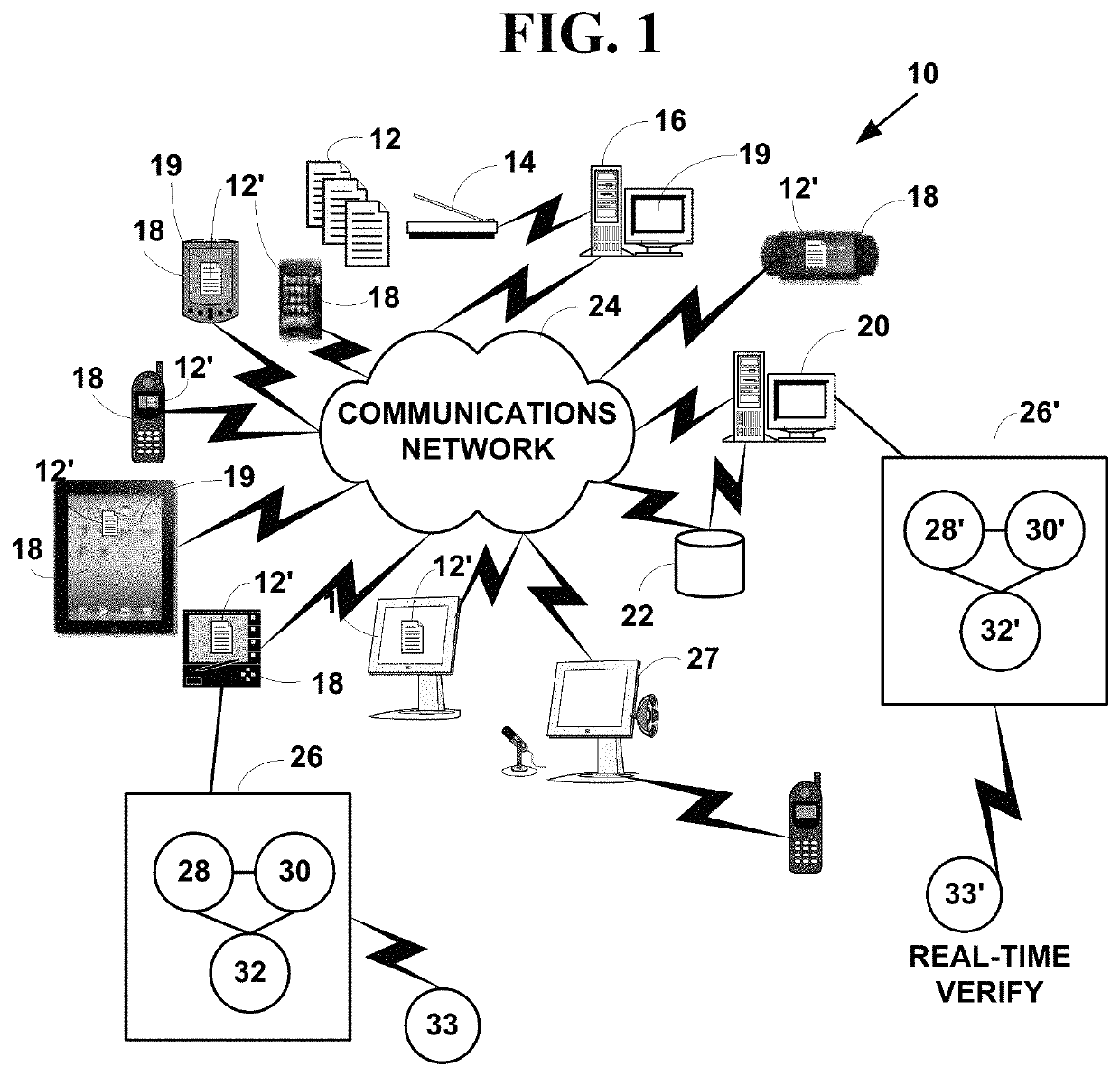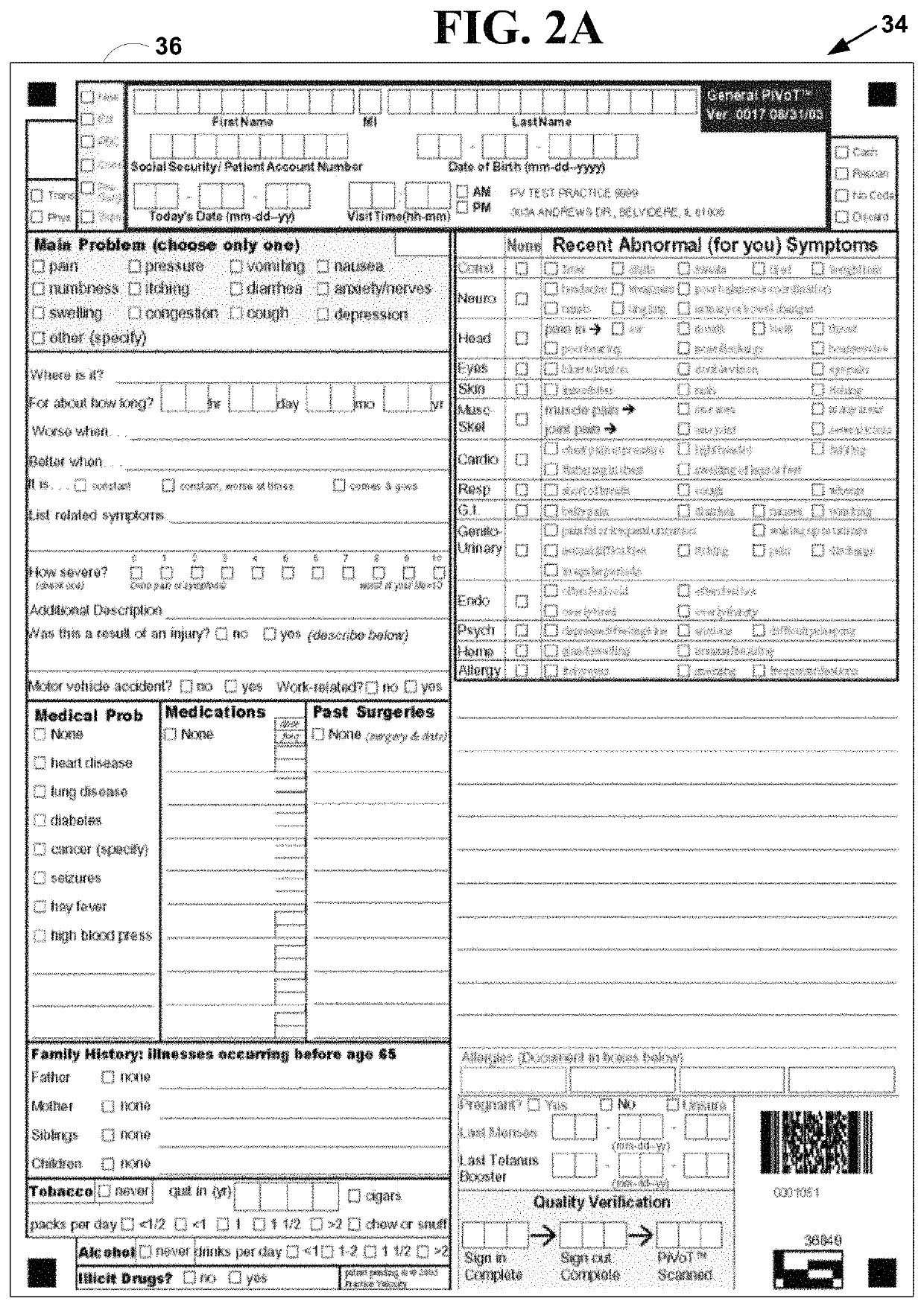Method and system for automated medical records processing with patient tracking
a technology for medical records and tracking, applied in the field of medical records and information, can solve the problems of loss of potential revenues, collection and recording medical information, and many physician practices' revenue generation problems and compliance problems, and achieve the effect of reducing complexity and risk
- Summary
- Abstract
- Description
- Claims
- Application Information
AI Technical Summary
Benefits of technology
Problems solved by technology
Method used
Image
Examples
Embodiment Construction
Medical Records System
[0079]FIG. 1 is a block diagram illustrating an exemplary medical records system 10. The medical records system 10 includes plural medical information templates, including plural paper 12 medical information templates and plural electronic medical information templates 12′, one or more electronic scanners 14 (one illustrated), one or more client computers 16 (one illustrated), one or more client network devices 18 each with a display component including a graphical user interface (GUI) 19, one or more server network devices 20 (one illustrated), and one or more databases 22 (one illustrated). The components of the medical records system 10 communicate via a communications network 24. The communications network 24 includes a cloud computing / communications network (FIG. 24).
[0080]The one or more different electronic medical information templates 12′ are periodically, automatically and dynamically updated via the communications network 24 to reflect changes in med...
PUM
 Login to View More
Login to View More Abstract
Description
Claims
Application Information
 Login to View More
Login to View More - R&D
- Intellectual Property
- Life Sciences
- Materials
- Tech Scout
- Unparalleled Data Quality
- Higher Quality Content
- 60% Fewer Hallucinations
Browse by: Latest US Patents, China's latest patents, Technical Efficacy Thesaurus, Application Domain, Technology Topic, Popular Technical Reports.
© 2025 PatSnap. All rights reserved.Legal|Privacy policy|Modern Slavery Act Transparency Statement|Sitemap|About US| Contact US: help@patsnap.com



